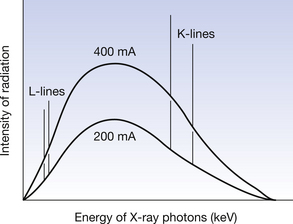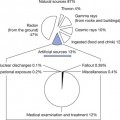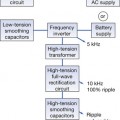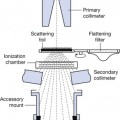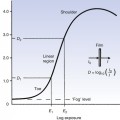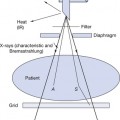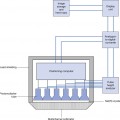Chapter 22 Factors affecting X-ray beam quality and quantity
Chapter contents
22.3 The effect of mA on the X-ray beam 160
22.4 The effect of kVp on the X-ray beam 160
22.5 The effect of the target material on the X-ray beam 161
22.6 The effect of rectification on the X-ray beam 161
22.7 The effect of filtration on the X-ray beam 161
22.8 Summary of the factors affecting the quantity, quality and intensity of the X-ray beam 163
22.1 Aim
The aim of this chapter is to consider the various factors which have an influence on the quantity and/or the quality of the beam of radiation from the X-ray tube.
The quantity of radiation in an X-ray beam is a measure of the number of photons in the beam. The terms quantity and exposure are often interchanged in radiography as the higher the quantity or amount of radiation, the greater the exposure to a structure. In fact, probably the simplest method of comparing the quantity of two beams of radiation is to compare the exposure received by a structure. As we shall see in Chapter 27, the exposure is measured using the unit of air kerma. As the quantity of radiation increases, so does the intensity of the beam.
The quality of a beam of X-rays is a measure of its penetrating power. As we saw in Section 21.6, the quality of the beam is related to its average photon energy. In Sections 20.7 and 20.8 we saw that a monochromatic beam of radiation is exponentially absorbed by a uniform medium and so the penetrating power of two beams may be compared by comparing their half-value thickness – the higher the value of the half-value thickness, the more penetrating the beam. Although the beam of X-rays from the tube is not monochromatic, but has a continuous spectrum over a wide range of energies, the half-value layer is a useful way of comparing the penetrating power of X-ray beams.
22.2 Introduction
In Chapter 21 we considered the mechanisms by which X-rays were produced at the anode of the X-ray tube. In this chapter we will consider the various factors which influence the quantity and/or the quality of the X-ray beam and hence its intensity at a given point. Before we look at this in any more detail, it is first important to ensure that we understand the meaning of the terms quantity, quality and intensity as applied to a beam of X radiation.
22.3 The effect of mA on the X-ray beam
The effect on the X-ray beam of altering the mA is shown in Figure 22.1. Note that the area under the graph for 200 mA is half the area under the graph for 400 mA. The maximum photon energy and the minimum photon energy are the same in each case and the average photon energy remains unaltered.
22.4 The effect of kVp on the X-ray beam
The kVp across the X-ray tube influences the force of attraction experienced by an electron released by the filament as it moves towards the anode. Thus, if the kVp is increased, then the kinetic energy of the electron at the point when it starts to interact with the target will be increased. As we saw in Section 21.4.2, the efficiency of X-ray production by Bremsstrahlung is proportional to E2 and so this improved efficiency means that:
As we already discussed in Section 21.4.2, increasing the kVp will also increase the energy of the maximum-energy photons in the beam – if the kVp is 50, then the maximum photon energy is 50 keV and if the kVp is 100, then the maximum photon energy is 100 keV. As the average photon energy is approximately 30–50% of the maximum photon energy, increasing the maximum photon energy will also increase the average photon energy.
Stay updated, free articles. Join our Telegram channel

Full access? Get Clinical Tree



